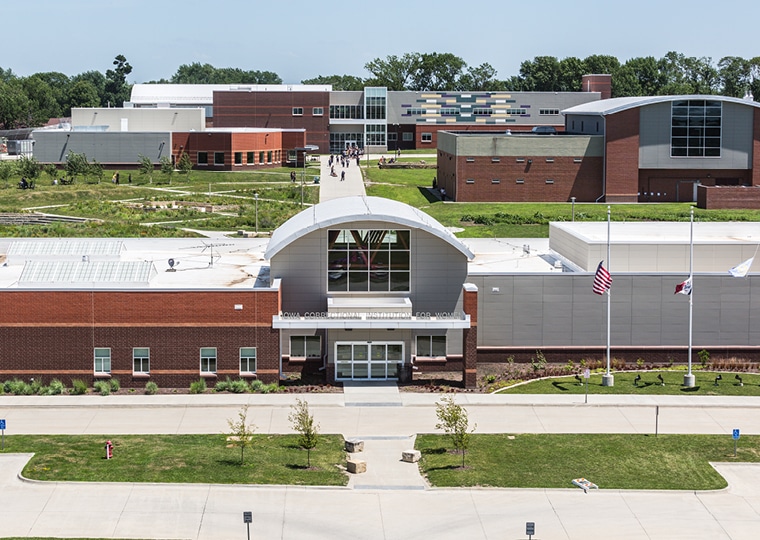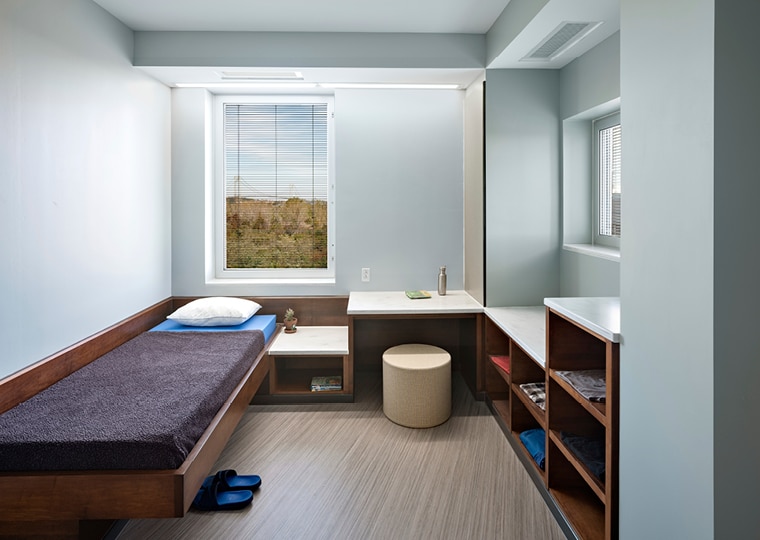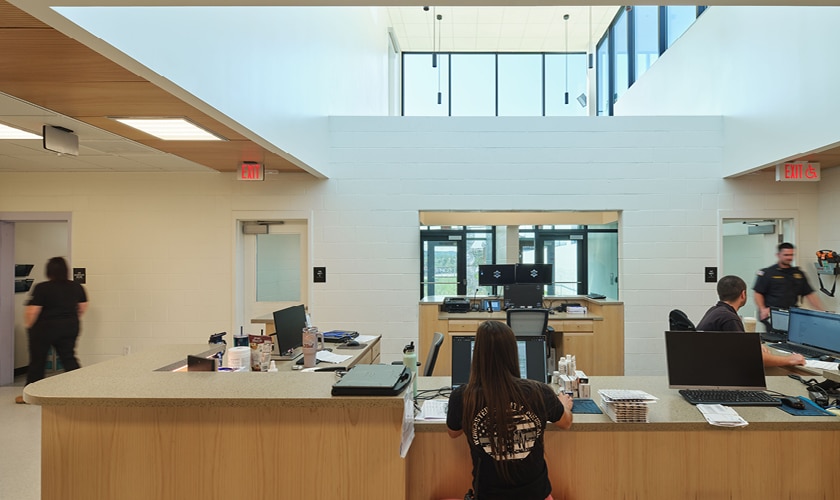
To inform the design process of the Baltimore Therapeutic Treatment Center (BTTC), STV brought together global thought leaders in the medical, mental health, and corrections fields to engage in a series of knowledge-sharing sessions. In this three-part series, we explore the nuances of correctional design and its impact on those in contact with the justice system by sharing insights and knowledge gained from these sessions.
In part one of this series, we look at the operational complexities of correctional facilities that aspire to provide effective care for detainees with unique medical and mental health needs. This piece features particular insights from Timothy Farrell, former senior deputy commissioner of the New York City Department of Correction; and Curtiss Pulitzer, principal at criminal justice consulting firm Pulitzer Bogard & Associates.
At STV, we believe that incarceration as an outcome should be viewed as a last resort. Typically, non-custody alternatives to incarceration better address alleged and convicted offenders based on their risks and needs, especially when facing substance abuse issues, mental illness, or homelessness. If deflection or diversion are not possible, the focus inside a detention facility should be on treatment and restoration.
STV’s design of the Baltimore Therapeutic Treatment Center co-locates deflection, diversion, detention, and re-entry services and allows agencies who have traditionally worked in silos to work together in a more unified way. The detention center is geared specifically towards the treatment of populations with medical, mental health, addiction, and other criminogenic needs. A joint work environment between correctional and clinical staff is highly advantageous, yet it can present operational challenges.
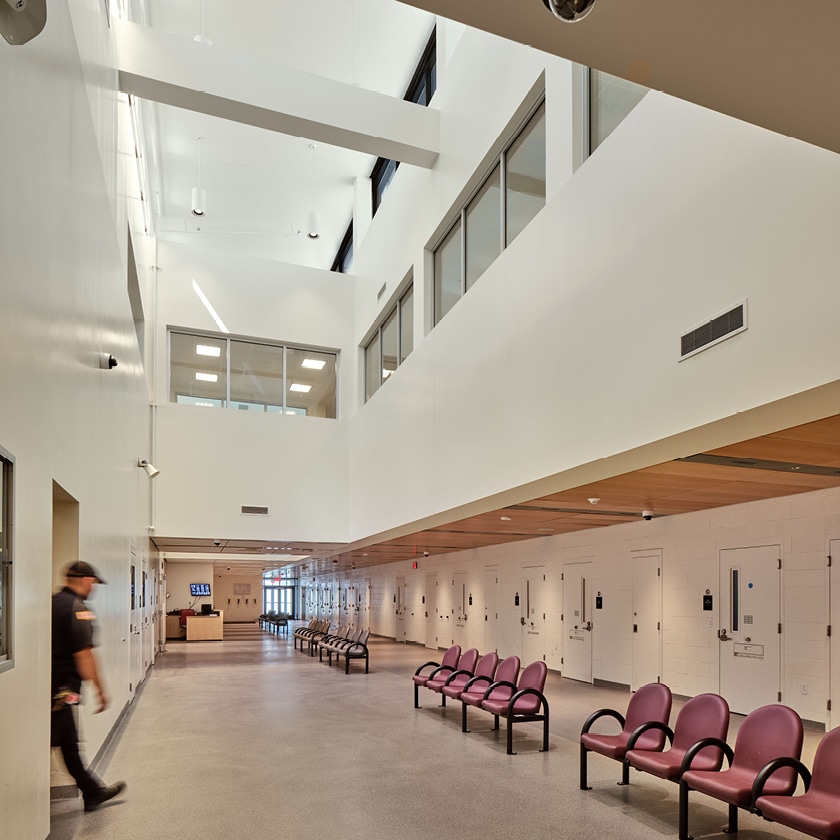
Inside a detention facility, the intake process represents a detainee patient’s first point of contact with the system and should be their first encounter with medical and mental health triage. Rather than relying on holding cells, a booking area should provide open seating and interview rooms for health screenings right at the front door. From this point onwards, medical and correctional staff should work closely together to ensure the privacy of patients as they talk to care providers while maintaining safety for all people involved.
Throughout all stages of the admissions process, clinical staff should track health conditions to ensure a detainee patient moves on to the appropriate setting. If a serious medical issue is discovered upon arrival to a facility, treatment or deflection to a hospital must be provided immediately.
“When we talk about healthcare in correctional settings, treatment should precede classification,” said Curtiss Pulitzer, principal at Pulitzer Bogard & Associates, one of STV’s subconsultants for the design of the BTTC. “Health needs to be the foremost consideration.”
While transferring a patient to a nearby hospital should always remain an option, a detention facility ideally will provide specialty clinic services in-house, whether through on-site specialty providers or telehealth. By avoiding the transfer of patients to other locations, operational efficiencies can be gained, staff safety can be enhanced, and patients can receive timely and accessible treatment.
To ensure maximum efficiency, healthcare services should be in close proximity to housing units, since that is where admitted individuals spend most of their time. In addition to a comprehensive central clinic, routine healthcare services such as medication distribution, triage, and sick call should be decentralized to housing.
If this is provided, housing units not only require the direct and active supervision of correctional officers but also the presence of clinical staff. For such a treatment model to function, clinical and correctional staff must work hand-in-hand in integrated treatment teams, blurring the traditional barrier between security and treatment services.
Effective communication and information sharing between medical and uniformed staff is crucial in the care of people in custody. Uniformed staff tend to spend the most time and develop rapport with detainees, enabling them to identify signs of decompensation or the need for further medical evaluation. Details about patient behaviors and other observations can often be shared between medical and correctional staff without violating the confidentiality of protected health information. Regular treatment team meetings should involve medical and counseling staff, critical social workers, as well as uniformed staff to foster collaboration and trust among staff and promote better care for the individuals in their charge. Designated spaces must be provided for staff to meet, share information, and hold case reviews to ensure continuity of care.
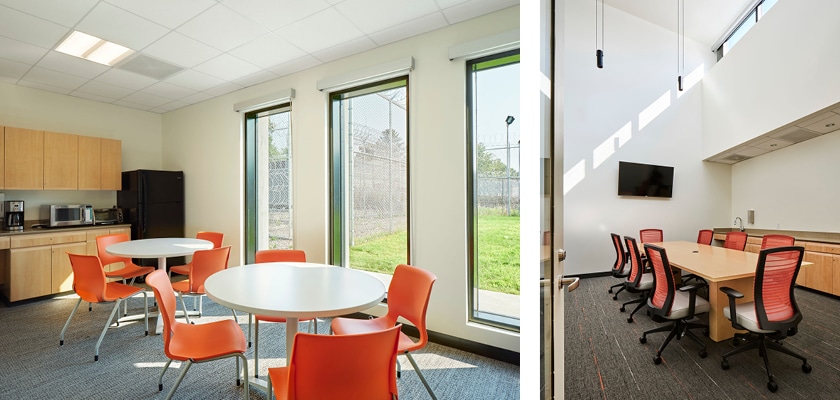
Finally, this holistic approach to operations in a treatment-focused environment requires correctional staff to be trained specifically in trauma-informed principles of care and health management of people in custody. Only with the proper training and buy-in of staff can detention facilities be successful in the treatment and restoration of detainee patients.
“You could build the best building you want, but if the culture of the staff who is going to work there isn’t right, you’re going to have significant challenges in being successful,” said Timothy Farrell, former senior deputy commissioner of the New York City Department of Correction, and an independent consultant who is working with STV on the BTTC project.
Having established the operational needs for a successful treatment-focused detention environment, the next part of this series will focus on better understanding patient populations.

